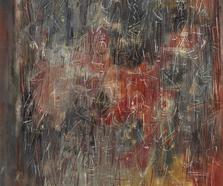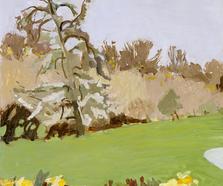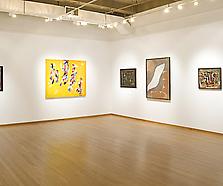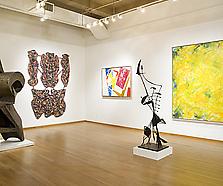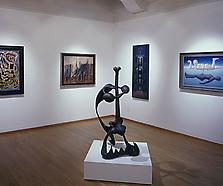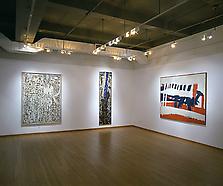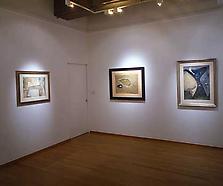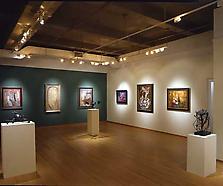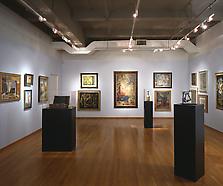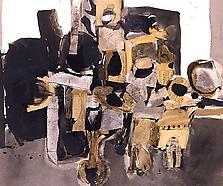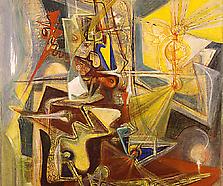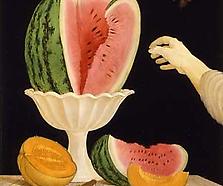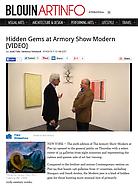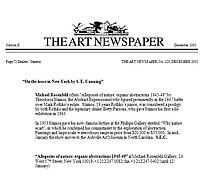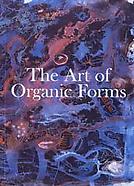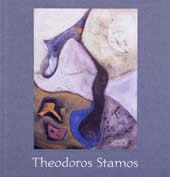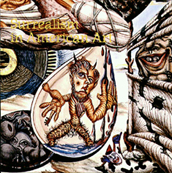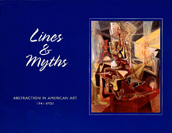“Rhythms and color create the interplay of spaces and thereby give to me the symbols needed for the exploration of the interior world.”[1]
The youngest member of the first generation of abstract expressionists, Theodoros Stamos was born in Manhattan in 1922 to Greek immigrant parents and grew up on the Lower East Side. Stamos’s interest in nature was sparked at a young age, when he would accompany his father on trips to Pelham Bay and Orchard Beach. He began collecting rocks and shells as a child, a habit he retained throughout his life. In 1936, he received a scholarship to the American Artists’ School, where he studied sculpture with Simon Kennedy and Joseph Konzal. At the school, Stamos also met Joseph Solman, who was part of “the Ten,” a group of politically conscious artists that included Adolph Gottlieb and Mark Rothko. Solman encouraged Stamos to pursue his interest in painting, and in 1939, Stamos left school to strike out on his own. He supported himself by running a framing business on East 18th Street, where clients included Paul Klee, Fernand Leger, and Arshile Gorky.
In 1943, Stamos met Betty Parsons, who gave him his first solo exhibition at the Wakefield Gallery. His work caught the attention of Gorky and Barnett Newman, who saw in his paintings of this era—which used the surrealist technique of automatism to create mystical, biomorphic visions—an interest in myth and abstraction similar to their own. Over the next few years, Stamos’s work was shown in various exhibitions, including the 1945 Annual Exhibition at the Whitney and The Ideographic Picture, curated by Newman in 1947 for Betty Parsons Gallery. In 1948, Stamos traveled to Europe for the first time, where he visited France, Italy, and Greece, including the island of Lefkada, the birthplace of his parents. Upon his return to New York City, Stamos affirmed his commitment to the exploration of abstraction and continued to create works guided by his firm belief that “for the painter there exists a spiritual power, which communicates life and meaning to material forms, and . . . he must achieve this power before taking part in the elaboration of forms.”[2]





